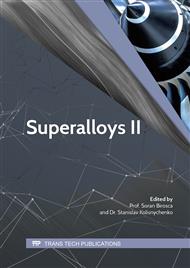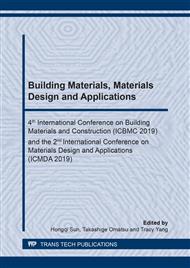[1]
W.Jomaa, Contributions to understanding the high speed machining effects on aeronautic part surface integrity,, École de technologie supérieure, Canada, PhD Dissertation, (2015).
Google Scholar
[2]
DW.Tang, CY. Wang, YN.Hu, YX.Song, Finite-element simulation of conventional and high-speed peripheral milling of hardened mold steel,, Metall Mater Trans A 40, (2009), 3245–3257.
DOI: 10.1007/s11661-009-9983-1
Google Scholar
[3]
B.Wang, Z.Liu, Investigations on the chip formation mechanism and shear localization sensitivity of high-speed machining Ti6Al4V,, Int J Adv Manuf Technol 75, (2014), 1065–1076.
DOI: 10.1007/s00170-014-6191-y
Google Scholar
[4]
E.Bagci, B.Ozcelik, Finite element and experimental investigation of temperature changes on a twist drill in sequential dry drilling,, Int J Adv Manuf Technol 28, (2006), 680–687.
DOI: 10.1007/s00170-004-2417-8
Google Scholar
[5]
T.Matsumura, S.Tamura, Cutting simulation of titanium alloy drilling with energy analysis and FEM. In: 15th CIRP Conference on Modeling of Machining Operations,, Procedia CIRP 31, (2015), 252–557.
DOI: 10.1016/j.procir.2015.03.045
Google Scholar
[6]
S.Eck, HP.Ganser, S.Marsoner, W.Ecker, Error analysis for finite element simulation of orthogonal cutting and its validation via quick stop experiments,, Mach Sci Technol 19, (2015), 460–478.
DOI: 10.1080/10910344.2015.1051541
Google Scholar
[7]
AP. Markopoulos, Finite element method in machining processes,, 1st ed. Springer, New York, (2013).
Google Scholar
[8]
S. Abotula, A.Shukla, and R.Chona, Dynamic Constitutive Behavior of Hastelloy X under Thermo-Mechanical Loads,, Journal of Materials Science 46(14) (2011), 4971–79,.
DOI: 10.1007/s10853-011-5414-y
Google Scholar
[9]
M.Aghaie-Khafri, and N.Golarzi, Forming Behavior and Workability of Hastelloy X Superalloy during Hot Deformation,, Materials Science and Engineering: A 486 (1–2), (2008), 641–47,.
DOI: 10.1016/j.msea.2007.11.059
Google Scholar
[10]
S.Abotula, N.Heeder, R. Chona, and A. Shukla, Dynamic Thermo-Mechanical Response of Hastelloy X to Shock Wave Loading,, Experimental Mechanics 54(2), (2014), 279–91,.
DOI: 10.1007/s11340-013-9796-4
Google Scholar



